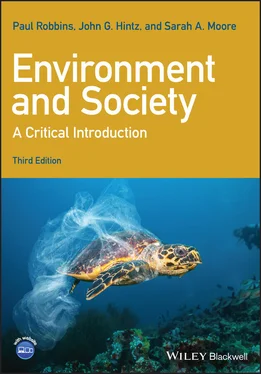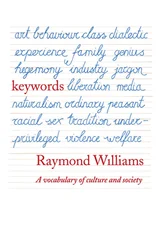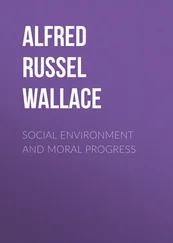329 317
330 318
331 319
332 320
333 321
334 322
335 323
336 324
337 325
338 326
339 327
340 328
341 329
342 330
343 331
344 332
345 333
346 334
347 335
348 336
349 337
350 338
351 339
352 340
353 341
354 342
355 343
356 344
357 345
358 346
359 347
360 348
361 349
362 350
363 351
364 352
365 353
366 354
367 355
368 356
369 357
370 358
371 359
372 360
373 361
374 362
375 363
376 364
377 365
378 366
379 367
380 368
381 369
382 370
383 371
384 372
385 373
386 374
387 375
388 376
389 377
390 378
391 379
392 380
1.1 Sandhill cranes of the Platte River. A half million of these birds congregate annually.
1.2 Heck Cattle, introduced to replace the extinct Aurochs.
2.1 Hypothesized demographic trends in a Malthusian conception. Limits of the environment, though they are amenable to steady increases resulting from growths in resource production, control human population trends with periods of high growth followed by periodic calamities and corrections that bring population back in line with the environment.
2.2 World population since 1750. Rapid increases in recent decades reflect exponential growth.
2.3 Global population growth rates. Population growth rates peaked in the 1960s and have steadily and continuously declined since then.
2.4 Population growth rates worldwide by country.
2.5 The demographic transition model. In theory, falling death rates lead to population growth, but as birth rates fall thereafter, the rate of growth slows, eventually ceasing when the two reach equilibrium.
2.6 National fertility and female literacy rates around the world: 2006. As female literacy increases, and along with it women’s autonomy and employment, fertility rates fall to replacement levels.
3.1 Environmental scarcity drives markets. Shell gas station operator Steve Grossi’s gasoline price board at his Shell station in Huntington Beach.
3.2 The market response model. In theory, scarcity of environmental goods and services sets into motion a series of adaptations to rising prices, actually resulting in increasing resource availability.
3.3 Regulation versus cap and trade. Both approaches result in net desired pollution reduction, but the cap-and-trade approach is theoretically cheaper overall.
4.1 The Prisoner’s Dilemma in game-theoretical terms. The best outcome, in the upper left, is also the least likely, since each player prefers to avoid the worst individual outcomes, in the upper right and lower left corners, leading to the worst collective outcome, in the lower right.
4.2 Irrigation systems are labyrinths of sluices, canals, and gates, which test the limits of people’s ability to cooperate in managing environmental goods. This example, from the village of Musha in the Nile Valley, shows the interrelationships of one private field to the next, tied together by the mutual need for water held communally.
4.3 A woman tending her herd in India. In many parts of the world the responsibility for using common property and the control over the rules of the commons are often split along lines of gender, class, or race, portending problems for management.
5.1 A sow’s “farrowing crate,” where she will remain for the 35 (or so) days her young are nursing. Crating is an economically efficient method of raising hogs, but is it wrong?.
5.2 (a + b) Hetch Hetchy Valley, undammed before 1914 (left), and today (right), now dammed to provide the city of San Francisco with a clean and reliable source of fresh water. The fate of this valley was debated between leaving it “wild” versus appropriating it for its direct human usefulness.
6.1 Voluntary/Involuntary–Common/Catastrophic: A matrix for explaining what people think is risky and why. Each axis describes the characteristic of a hazard that tends to lead people, however erroneously, to assume it is or is not risky.
6.2 Map of tribal lands and superfund sites.
7.1 The secret of surplus value, in a nutshell. By the same principle, the environment must be worked harder and underinvested in order to sustain surpluses. The artist, Fred Wright (1907–1984), made panel-cartoons and animated shorts for the United Electrical Workers Union throughout his career.
7.2 Schematic representation of the possible contradictions that capitalism produces and the social and environmental responses they engender, possibly leading the way to a more sustainable and transparent society.
8.1 Though Pacific Northwest forest is “Old Growth,” since many of its trees are more than 150 years old, many of these forests are quite young, have been highly disturbed, swept by fire, and impacted by human uses. In this sense, not all Old Growth Forest is “pristine”.
8.2 Pollen evidence from Morocco over 14,000 years. Despite the ongoing dominant discourse that post-Roman North Africa experienced “desertification” and loss of tree cover following “Arab Invasions,” pollen data show no significant decrease in tree pollen in the past thousand years.126
8.3 John Gast, “American Progress,” 1872. Lady Liberty brings light (and farmers, plowed fields, telegraph lines, trains, etc.) as she drives the darkness (including “Indians” and wild animals) out of the wilderness.
9.1 Percentage female interns, staff, and boards of all mainstream environmental organizations (adapted from Taylor 2014).
9.2 The diverse economies iceberg, featured on the website of the Community Economies Collective and the Community Economies Research Network.
9.3 An industrial worker with Phossy Jaw.
9.4 BabyLegs (below) compared to a more traditional trawling micro-plastics sensor. BabyLegs is usually made from pink baby tights that bob in the water, making it look like she is swimming.
10.1 Predicted surface of child blood lead level and ward-specific elevated water lead level after (post) water source change from Detroit-Supplied Lake Huron water to the Flint River: Flint, MI,
10.2 Correlations of class and race with plumbing poverty in the United States. Native communities in the West are especially impacted.
10.3 Hazardous waste and military facilities in Tooele County.
11.1 Carbon on Earth. A Gt is a gigaton, or a billion tons. Ninety-nine percent of carbon is contained in the Earth’s crust. Most of the flow of carbon is between the oceans, the atmosphere, and soils and plants.Modern industry has removed large quantities of carbon from the Earth’s crust and, through combustion, has released them into the atmosphere as CO 2.
11.2 The Keeling curve: Atmospheric concentrations of CO 2since 1958. The overall trend is a steady upwards curve. Annual variability (smaller up and down oscillations) is a result of the seasons in the northern hemisphere; plants green up in the spring, taking CO 2out of the atmosphere, and die-off in the fall, re-releasing that carbon.
11.3 Atmospheric concentration of carbon. Over the past thousand years carbon in the atmosphere has hovered at around 280 parts per million. With the explosion of industrial activity starting in 1800, more parts of human activity depend on combustion of fossil fuels and atmospheric carbon has increased exponentially as a result.
11.4 Global average temperatures, sea level, and snow cover. Over precisely the period when there has been a radical increase in the emission by people of gases that are understood to trap heat in the atmosphere, global temperatures have risen steadily, sea levels have increased, and snow cover has declined.
Читать дальше











